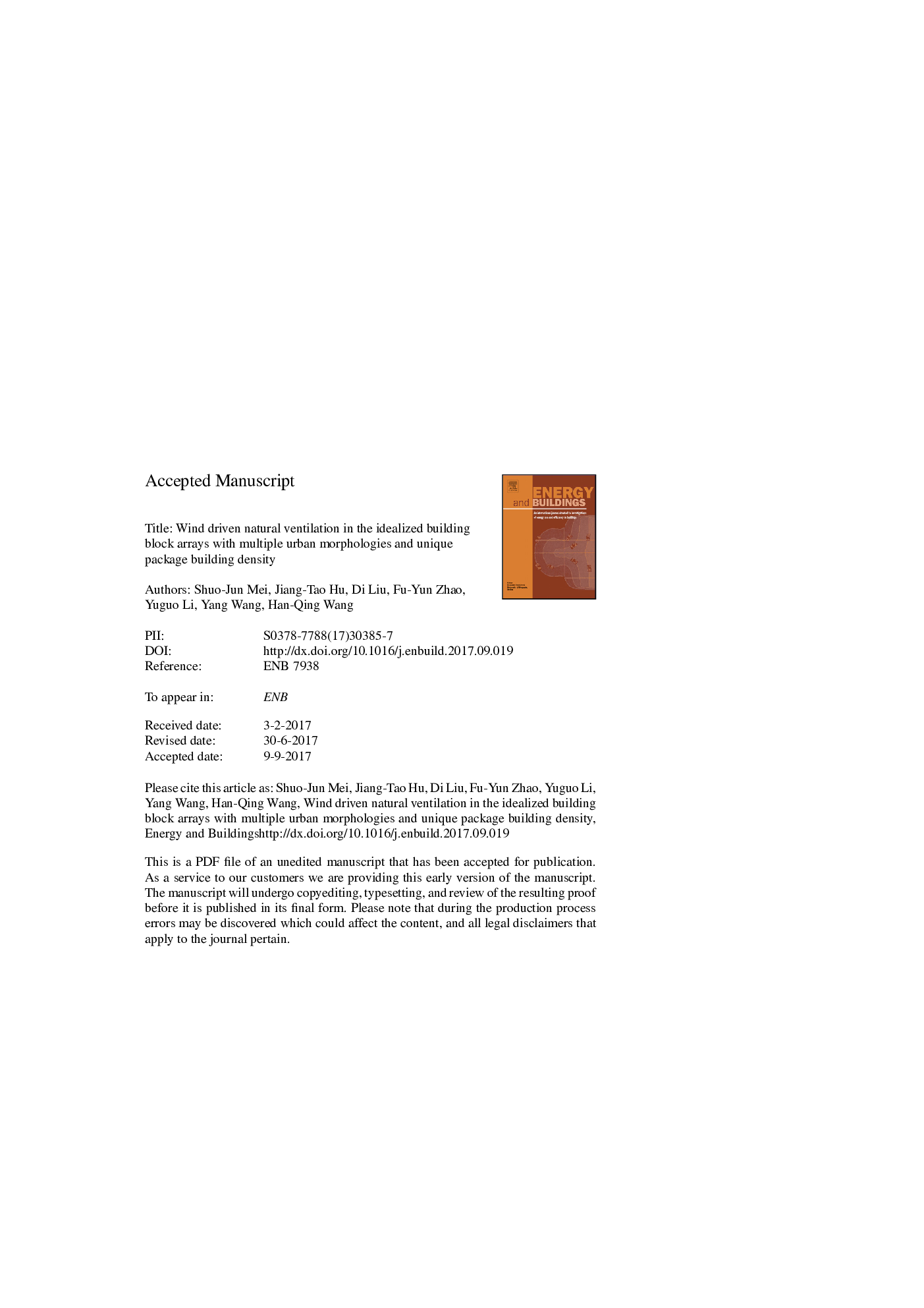| Article ID | Journal | Published Year | Pages | File Type |
|---|---|---|---|---|
| 4918863 | Energy and Buildings | 2017 | 50 Pages |
Abstract
Improved ventilation in an urban residential neighborhood is a determinant for better energy efficiency and air quality of the neighborhood. This is particularly important for the real estimates recently developed in many cities in China, as these neighborhoods are built with high density. In this paper, we consider in an idealized neighborhood with two categories of packaging building densities (λp) of 0.25 and 0.44, which respectively represent medium and compact urban development. For each packaging density, the frontal area density of arrays is varied from 0.125 to 0.5 through adding building blocks and reducing building size simultaneously. Computational fluid dynamics simulations are carried out to predict the wind flow through the building arrays by the use of renormalization group (RNG) k-ε turbulence model. Our predictions are validated by comparing with experimental data. Numerical results reveal that ventilation rate could be greatly enhanced when a low level of packaging building density is maintained. The momentum exchange rate at the canopy roof level is effectively strengthened when the frontal area density decreases, together with a reduction of ventilation in the urban canopy layer (UCL). Additionally, a linear relationship is found between the UCL ventilation rate and the momentum exchange rate at the urban canopy roof level. For a constant packaging density, reducing frontal area density improves the city block ventilation by enhancing the air exchange rate at the roof level rather than increasing horizontal drag. This paper also illustrates a practical strategy in optimum neighborhood building layout design to minimize the pollutant level.
Related Topics
Physical Sciences and Engineering
Energy
Renewable Energy, Sustainability and the Environment
Authors
Shuo-Jun Mei, Jiang-Tao Hu, Di Liu, Fu-Yun Zhao, Yuguo Li, Yang Wang, Han-Qing Wang,
